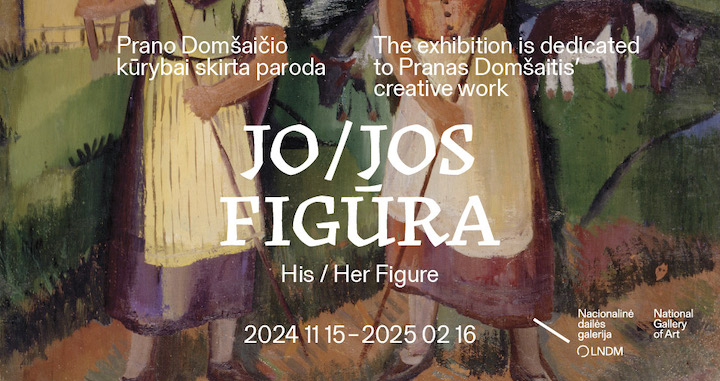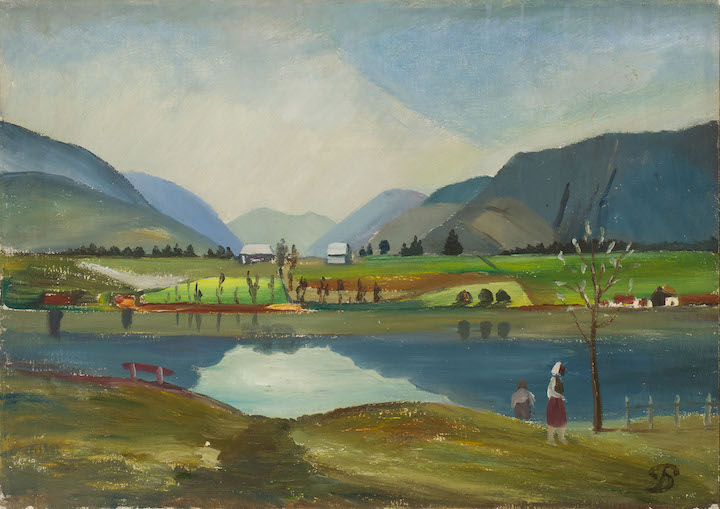
Pranas Domšaitis (1880–1965). Austrian Landscape. 1930–1932. Oil on canvas. The Lithuanian National Museum of Art ©
National Gallery of Art of the LNMA opens an exhibition Pranas Domšaitis (1880–1965). Her/His Figure by the renowned expressionist painter Pranas Domšaitis (1880–1965. The exhibition curated by Aušra Traškelytė features over fifty Domšaitis’s paintings, which together provide a figure in the round of the artist – a nomad, migrant and an emigrant. A recently updated edition of the main collection by the painter’s artwork is on permanent display at Pranas Domšaitis Gallery of the LNMA in Klaipėda. The exhibition Pranas Domšaitis (1880–1965). Her/His Figure in Vilnius will be open for visitors through 16 February 2025. Concurrently, the NGA hosts an exhibition David Goldblatt (In)visible Structures by the world-famous photographer of the 2nd-half of the 20th century, virtuoso of social documentary photography David Goldblatt (1930–2018). These two artists are linked through their artistic careers in South African Republic.
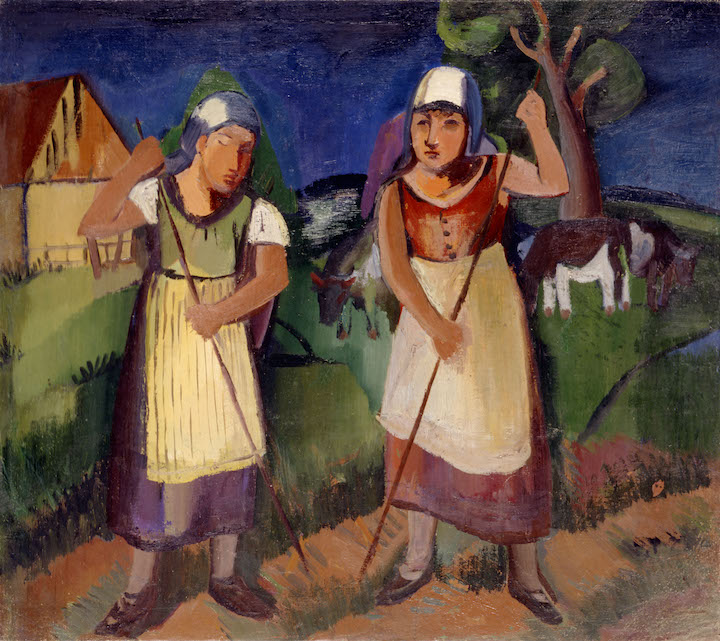
Pranas Domšaitis (1880–1965). Two Peasant Women. 1928, Oil on canvas. The Lithuanian National Museum of Art ©
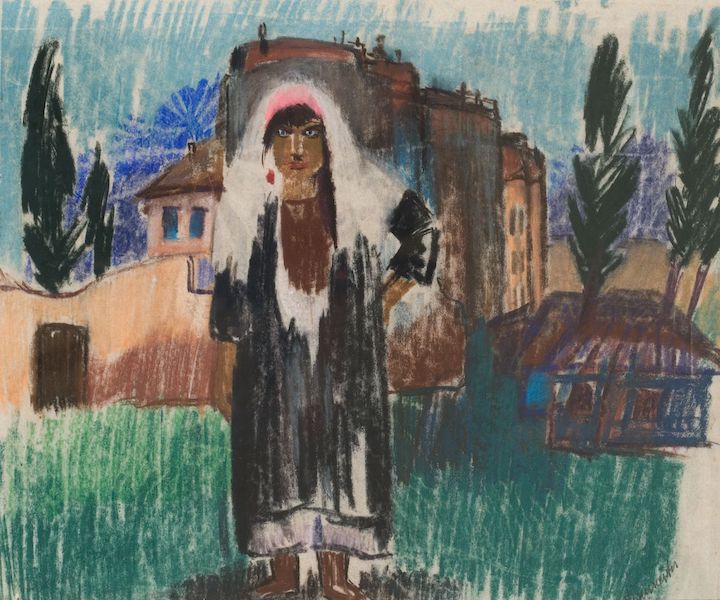
Pranas Domšaitis (1880–1965). City of Constantinople. 1925, Pastel on paper. The Lithuanian National Museum of Art ©
Foreigner without a homeland
Pranas Domšaitis’s artistic career winds across East Prussia, Germany, Austria, finally, to South Africa. His legacy appears a record of landscapes characteristic of the geographic locations where he settled for longer or shorter periods, but not only, being a true nomad, he left sketches also of locations visited from curiosity. These are mostly views of the countries outside the bounds of the European continent – Tunisia, Somalia, the Bosphorus Strait, Turkey are examples.
The exhibition Pranas Domšaitis (1880–1965). Her/His Figure marries two classical genres of painting, portrait and landscape. By selecting the artworks within these generic categories, the curator of the exhibition suggests to observe the nuances of colour of these geographically diverse landscapes and to link them to the ethnographic element of his sitters, mostly women. “The present-day postcolonial perspective requires that we give a critical reflection on such a way of seeing other cultures and humans, and their identity. Yet on the other hand, the landscapes of pristine nature which we juxtapose with the climate change that we experience, undoubtedly leave us in reverence. Notably, the questions of identity come up also when we try to present a portrait of Domšaitis – a homeless foreigner – Heimatlose Ausländer,” Aušra Traškelytė shares her reflections on the exhibition.
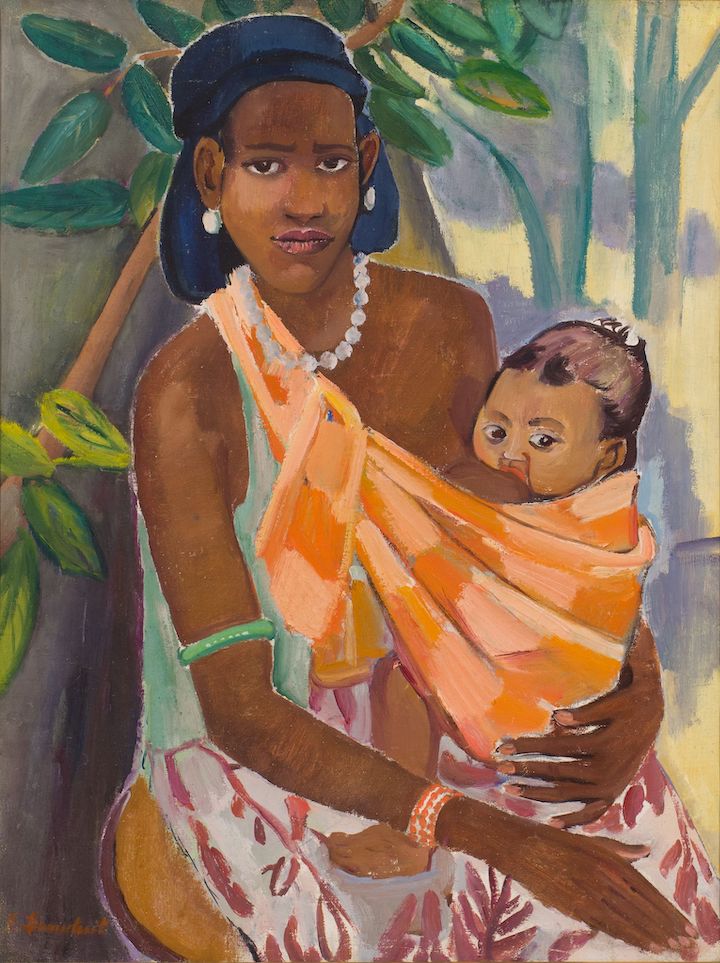
Pranas Domšaitis (1880–1965). Mother and Child. 1924, Oil on canvas. The Lithuanian National Museum of Art ©
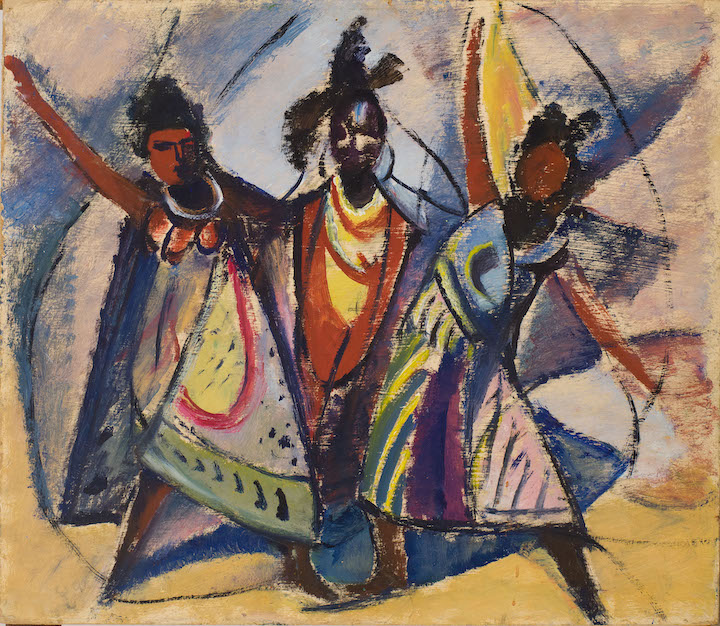
Pranas Domšaitis (1880–1965). Three Dancers. 1956–1957, Oil on cardboard. The Lithuanian National Museum of Art ©
The connections with Lithuania
Though the artist was brought up and came of age in German milieu, Domšaitis actively proclaimed his Lithuanian origins. In 1920, he was issued a Lithuanian passport; around 1938, he started signing his artwork by the Lithuanian version of his name, as Domsaitis.
Following his encounter of the Lithuanian émigré artists in post-war Austria, Domšaitis participated in the war-refugee exhibitions as a Lithuanian artist. The connections that began in Austria were sustained throughout his life: he communicated with these artists by letters, and took part in the exhibitions arranged by them in the USA and Canada. In 1979, Domšaitis, with his wife Adelheida Armhold, left for the South African Republic, where they settled in Cape Town. The painter soon became part of the local art scene, he exhibited frequently in solo events, and in 1963, represented the country at the prestigious San Paolo Biennial.
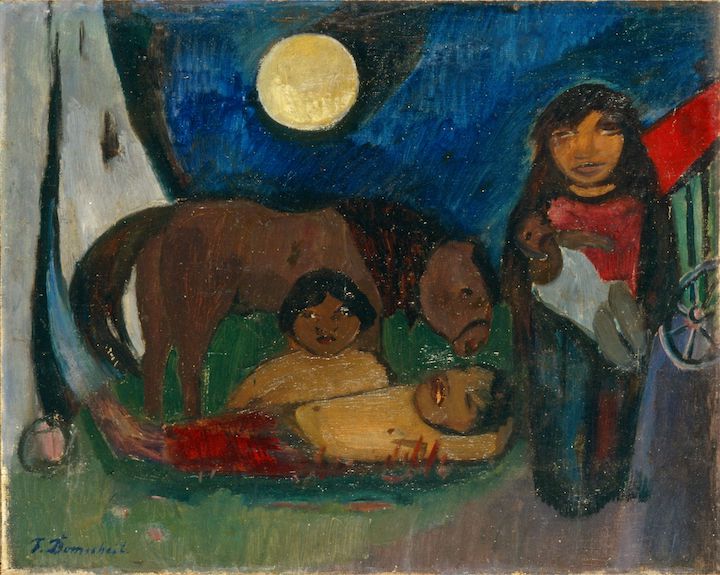
Pranas Domšaitis (1880–1965). Romani people. 1925, Oil on canvas on cardboard. The Lithuanian National Museum of Art ©
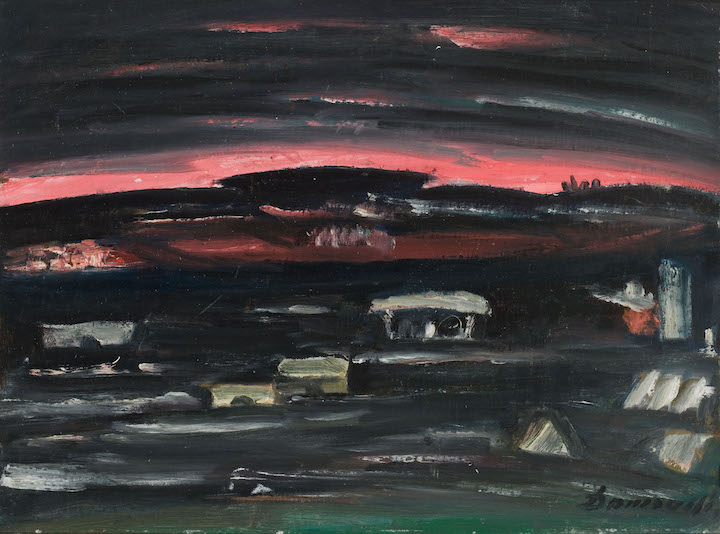
Pranas Domšaitis (1880–1965). Sunset in Karoo. 1960–1962, Oil on cardboard. The Lithuanian National Museum of Art ©
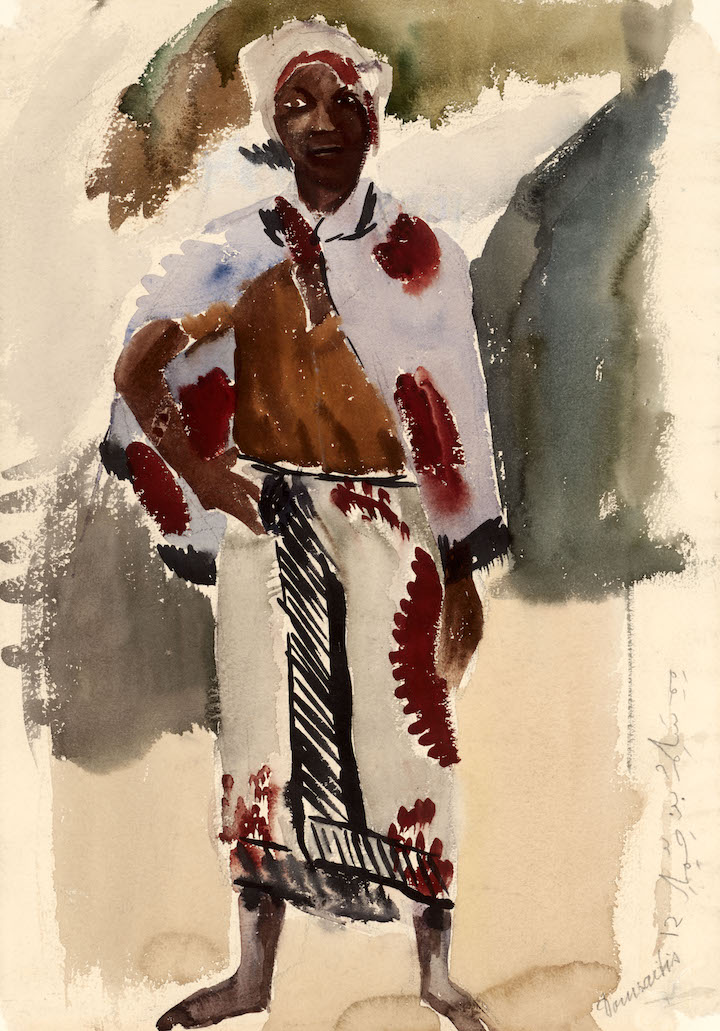
Pranas Domšaitis (1880–1965). Standing Woman. XX a. 2 deš. 1910s, Pastel on paper. The Lithuanian National Museum of Art ©
The artist’s legacy
Pranas Domšaitis was always mentioned among art celebrities – before the Second World War, mostly in Europe, and especially so in Germany, after the war, in the Republic of South Africa, his art is definitely part of the history of modern art. In 1964, he won the prestigious Artists of Fame and Promise competition, one of the top prizes in South Africa.
The exact scope of the artist’s legacy is impossible to tell, part of his artwork was lost, his other works are held by the museums and private collections in Germany, Austria, Canada, South Africa and elsewhere. The biggest collection of 665 artworks that was donated by the Lithuanian Foundation based in the USA to the Lithuanian National Museum of Art is on display at the permanent exhibition Always on the Road at the Pranas Domšaitis Gallery of the LNMA.
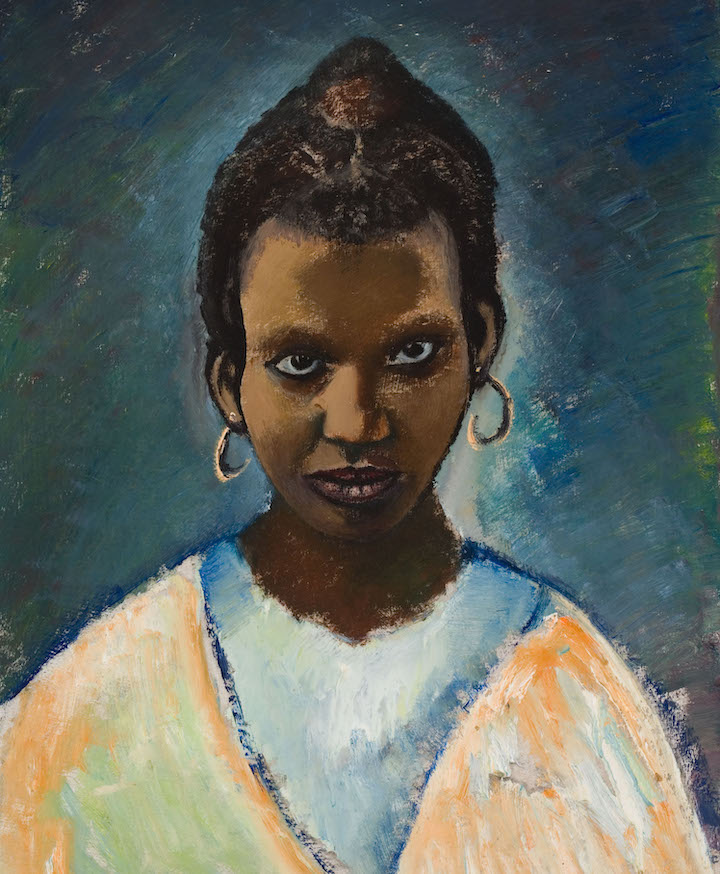
Pranas Domšaitis (1880–1965). Portrait. 1953–1954, Oil on cardboard. The Lithuanian National Museum of Art ©
The artist coming alive in a comics book
This November at the Vilnius Domšaitis’s exhibition, the Pranas Domšaitis Gallery will present, a unique publication Daugiau nei mato akys: komiksas apie Praną Domšaitį ir meno sroves [More Then Eyes Can See: A Comics About Pranas Domšaitis and Movements in Art] – a comics book designed together with Miglė Anušauskaitė. The comics book not only tells the life story of Domšaitis, but also introduces the movements in art that shaped and enriched his style. The book for young adults and adults will help to answer such questions as why his art was included into the Nazi– organized exhibitions of the “Degenerate art” or what European modernism learned from African art, among others.
Exhibition Pranas Domšaitis (1880–1965). Her/His Figure
Curator Aušra Trakšelytė
Coordinator Gabrielė Radzevičiūtė
Architect Mindaugas Reklaitis
Designer Laura Grigaliūnaitė
Coordinators of events and programmes of educational workshops: Goda Aksamitauskaitė, Austėja Tavoraitė, Kotryna Markevičiūtė, Eglė Nedzinskaitė, Beatričė Mockevičiūtė
Translator Aleksandra Fominaitė
Communication coordinators: Emilija Blockutė, Indrė Polimaitienė and Rūta Statulevičiūtė-Kaučikienė
Proofreading Ilona Čiužauskaitė
Thanks to: Skaistė Marčienė, Aurelija Malinauskaitė

